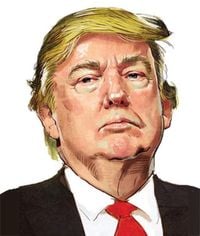On October 1, 2025, Beijing’s iconic Tiananmen Square became the stage for a display that sent ripples far beyond China’s borders. As part of the 80th anniversary celebration marking Japan’s defeat in World War II, China unveiled a new generation of nuclear missiles, officially confirming—for the first time—that it now possesses a fully functional nuclear triad: the ability to launch nuclear weapons from land, air, and sea. The move was as symbolic as it was strategic, signaling both technological achievement and a clear message to the world about China’s evolving role in the nuclear landscape.
While China’s arsenal still pales in comparison to those of Russia and the United States, its expansion has reignited debate about the future of global arms control. According to a recent analysis in Carnegie Endowment for International Peace, China’s nuclear arsenal remains far smaller and less reliable than those of its superpower counterparts, with only 24 deployed warheads compared to the 1,550 cap set by the New START treaty for the US and Russia. Yet, the very fact that China is increasing both its warhead count and delivery systems has raised eyebrows—and concerns—among arms control advocates and policymakers alike.
Beijing, for its part, insists that its longstanding no-first-use policy remains the bedrock of its nuclear strategy. This doctrine, which pledges never to use nuclear weapons first in a conflict, is often cited by Chinese officials as evidence of their commitment to peace and stability. But the context behind China’s nuclear posture runs deep, shaped by decades of historical mistrust and perceived threats, especially from the United States.
As Wu Riqiang, a prominent Chinese arms control expert, recently pointed out, most Western analyses miss the mark by failing to appreciate the unique historical forces that have shaped China’s nuclear thinking. After all, China’s initial pursuit of nuclear weapons was driven by direct nuclear threats from the US during the Korean War and the Taiwan Strait crisis of the 1950s. When China detonated its first atomic bomb in 1964, leaders claimed they were left with no choice: the nuclear monopoly of the United States, Soviet Union, and United Kingdom—cemented by the Partial Test Ban Treaty of 1963—was seen as a “big fraud” designed to exclude and restrain China.
Even after Mao’s death in 1976, this deep skepticism lingered. China began to engage in multilateral arms control, but always with an eye toward protecting its own interests. Secrecy and survivability—ensuring that its arsenal could withstand a first strike—became paramount, often at the expense of transparency or risk reduction. As Wu noted, “China prioritizes nuclear survivability and maximum secrecy around its arsenal over reassuring other nations and pursuing nuclear risk reduction.”
Yet, as China’s arsenal grows and its technological capabilities improve, some experts believe a shift may be on the horizon. Wu argues that as China becomes more confident in its second-strike capability—the ability to respond to a nuclear attack with a devastating counterstrike—it may be more willing to engage in risk reduction and transparency measures. “In the future,” Wu suggests, “it is possible that China’s approach will shift from an emphasis on safeguarding its national defense through secrecy to reassurance of other nations, as a result of greater confidence in the resilience of its arsenal.”
But what are the prospects for arms control in this new era? Some advocates urge the United States to seize the moment and open talks with China, warning that the window for meaningful engagement could be closing. Others, however, see opportunity in China’s growing arsenal—arguing that as Beijing’s interests become more aligned with those of established nuclear powers, it may be more open to discussions about risk reduction and strategic stability.
Recent developments suggest that China’s approach to arms control remains cautious but not inflexible. Beijing has consistently stated that it will not consider reductions in its nuclear capabilities until Russia and the United States—who possess far larger arsenals—make significant cuts of their own. China supports multilateral arms control treaties like the Comprehensive Test Ban Treaty (CTBT) and the proposed Fissile Material Cut-Off Treaty (FMCT), and regularly calls for a global no-first-use agreement. However, it insists that nuclear issues cannot be separated from the broader context of bilateral relations.
This stance was echoed in a joint statement issued by Russia and China on May 8, 2025, in the context of World War II commemorations. According to IDN-InDepthNews, the statement emphasized the interconnected destinies of all nations and urged states not to seek security at the expense of others. The two countries criticized provocative actions such as the deployment of nuclear weapons outside national borders and singled out the US “Golden Dome” space defense program—confirmed on July 17, 2025—as a particularly destabilizing development. The statement declared, “The two sides oppose the attempts of individual countries to use outer space for armed confrontation.”
Russia and China also called for negotiations on a legally binding treaty to prevent the placement of weapons in outer space and to ensure the peaceful use of space for all nations. They urged the international community to adopt a policy of not being the first to deploy weapons in space, warning that the militarization of space could spark a new and dangerous arms race.
Meanwhile, the issue of nuclear testing continues to cast a long shadow over global arms control efforts. Despite the signing of the CTBT in 1996, the United States never ratified the treaty, and both Russia and China have continued certain types of nuclear testing. As IDN-InDepthNews notes, the US has maintained a “Stockpile Stewardship” program that includes sub-critical tests—explosions that stop short of a full nuclear chain reaction—while Russia and China have conducted similar activities at their own test sites. The lack of a truly comprehensive ban has fueled mistrust and, in some cases, spurred other countries to develop their own nuclear capabilities.
In the midst of these tensions, the New START treaty between the US and Russia—one of the last remaining pillars of nuclear arms control—is set to expire in February 2026. While there is hope that the treaty will be extended, its uncertain future only adds to the urgency of finding new avenues for dialogue and risk reduction.
So where does this leave the United States? Many experts argue that Washington should acknowledge the reality of mutual nuclear vulnerability with China, rather than pursuing a futile arms race. As one analyst put it, “Failure to do so will only result in a tit-for-tat arms race.” Instead, the US could pursue genuine engagement on issues like no-first-use policies and nuclear risk reduction—steps that would benefit not just the two countries, but the entire world.
Of course, progress will require more than words. As Chinese analysts have pointed out, Beijing will only be convinced by concrete actions, not rhetoric. And while some in the US government feel that China is dragging its feet, the reality is more nuanced: China is not refusing to engage, but it is unwilling to do so on one-sided terms.
As the world marks eight decades since the end of the most devastating conflict in human history, the stakes could hardly be higher. China’s nuclear expansion, the uncertain fate of arms control treaties, and the specter of a new arms race in space all point to a future that is anything but settled. Yet, as the recent joint statement from Moscow and Beijing reminds us, the destinies of all nations are intertwined—and the choices made today will shape the world for generations to come.




